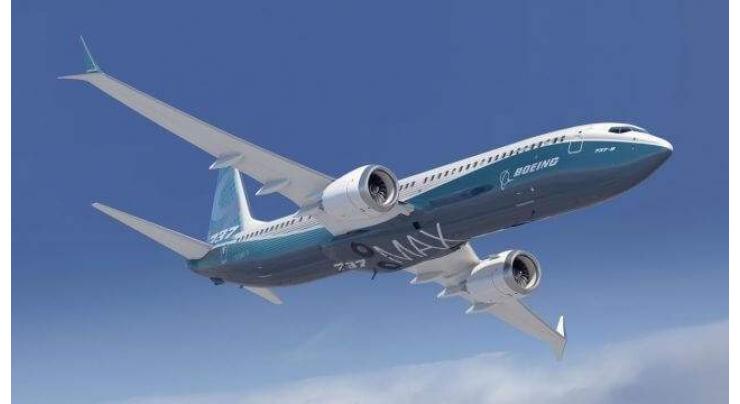
Boeing Hid 2009 Crash Report Foreshadowing 737 MAX Disasters - Reports
Mohammad Ali (@ChaudhryMAli88) Published January 21, 2020 | 04:01 PM

US airplane manufacturer Boeing attempted to bury evidence of technical flaws in its planes in a 2009 report, downplaying the role of an issue that would later result in two crashes that killed a combined 346 people, the New York Times reported
MOSCOW (UrduPoint News / Sputnik - 21st January, 2020) US airplane manufacturer Boeing attempted to bury evidence of technical flaws in its planes in a 2009 report, downplaying the role of an issue that would later result in two crashes that killed a combined 346 people, the New York Times reported.
According to the newspaper, US and Boeing investigators extensively manipulated the Dutch Safety Board's final report on the Turkish Airlines crash outside Amsterdam's Schiphol Airport on February 25, 2009 which killed 9 people out of the 128 it was carrying by whitewashing the manufacturer's role in the crash and instead pointing to the pilot's apparent errors.
An independent investigation by Australian safety expert Sidney Dekker, which says that faulty sensors and automation software systems contributed to the crash, was never made public due to alleged pressure from the US National Transportation Safety board (NTSB) and Boeing representatives, the article reported. Dekker himself confirmed this on Twitter upon the article's publication.
Times investigative reporter Chris Hamby, who read the previously classified Dekker report, said that the expert's findings and the sequence of events in the 2009 crash were similar to those seen in the two Boeing 737 MAX crashes in 2018 and 2019.
The 2009 crash happened with a model that preceded the 737 MAX and contained a similar unique system of sensors and software to guide the plane during takeoff and landing.
The reports on the 2018 Indonesian Lion Air and 2019 Ethiopian Air crashes concluded that Boeing apparently relied on pilots' judgment and experience to diagnose any faulty sensor data and remedy it immediately, thereby leaving crucial information out of pilot manuals.
Reports found that the pilots in all three cases were not trained in the specific models they were flying and were therefore unable to make split-second decisions about unfamiliar aircraft behaviors. Boeing and the NTSB used these findings to blame the 2009 crash on inadequate training, The New York Times stated.
The two crashes in Indonesia and Ehtiopia, which happened within five months of each other, prompted authorities worldwide to ground the 737 MAX, which until then had been Boeing's fastest selling aircraft. Subsequent reports found error-prone sensors and software that overrides pilot commands as the Primary causes of the crash.
Related Topics
Recent Stories

Pak Vs NZ T20I: Orphaned children extended special invitation to watch match

Finance Minister lauds UNDP’s unwavering support during floods

President Raisi leaves for Iran from Karachi

Currency Rate In Pakistan - Dollar, Euro, Pound, Riyal Rates On 24 April 2024

Today Gold Rate in Pakistan 24 April 2024

Punjab CM inaugurates Pakistan’s first Virtual Women Police Station

Dutch model Donny Roelvink embraces Islam

Experts raise concerns over introduction of 10-stick packs

Iranian president arrives in Karachi

Law Minister expresses Govt's resolve to address issue of missing persons

Rizwan’s batting order may be changed: Sources

Nawaz Sharif to visit Guangzhou exhibition in China
More Stories From World
-
Pakistan catching ride on global EV boom
7 minutes ago -
US markets rise for second straight day as sentiment improves
7 minutes ago -
Tokyo stocks end sharply higher
7 minutes ago -
Seven arrested in Australian 'terrorism' raids: police
7 minutes ago -
Acting Consul-General visits Pengzhou city, China to promote relations
27 minutes ago -
Doncic shines as Mavs sink Clippers; Timberwolves down Suns
47 minutes ago
-
Israel says US military aid sends 'strong message' to enemies
2 hours ago -
Under stress of war, gambling grips Ukrainian soldiers
2 hours ago -
Long-delayed Ukraine aid clears US Congress, awaits Biden signature
2 hours ago -
Up the Congo River on an eventful voyage aboard 'God's Miracle'
2 hours ago -
A 'healthy addiction': sea saunas make waves in Ireland
2 hours ago -
Victims of China floods race to salvage property
2 hours ago